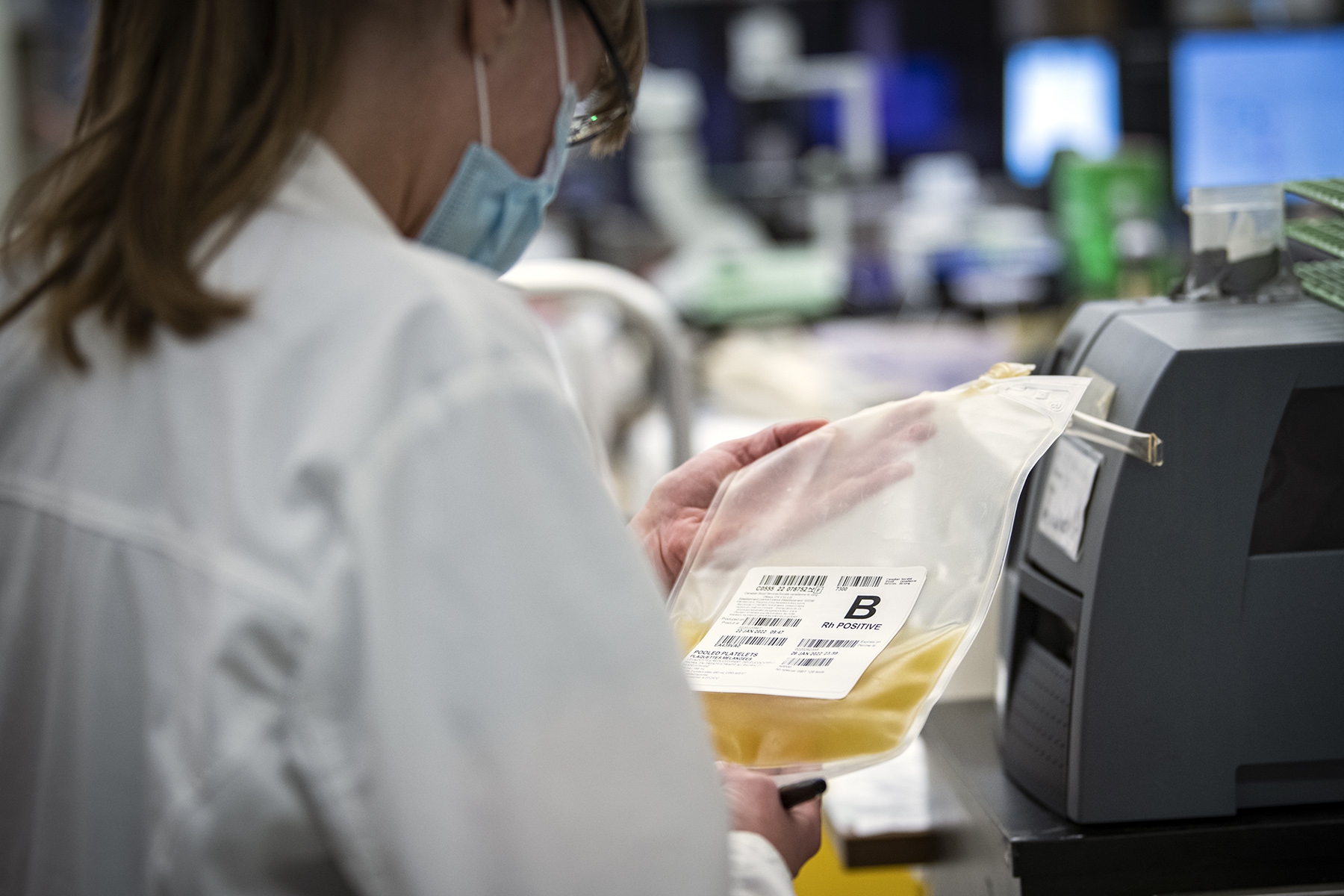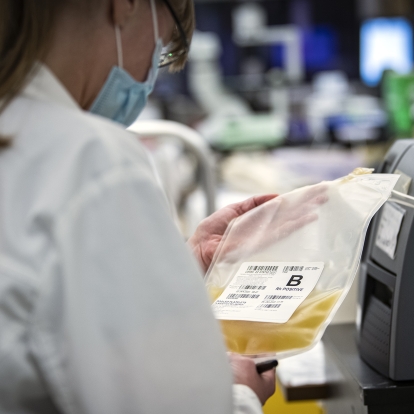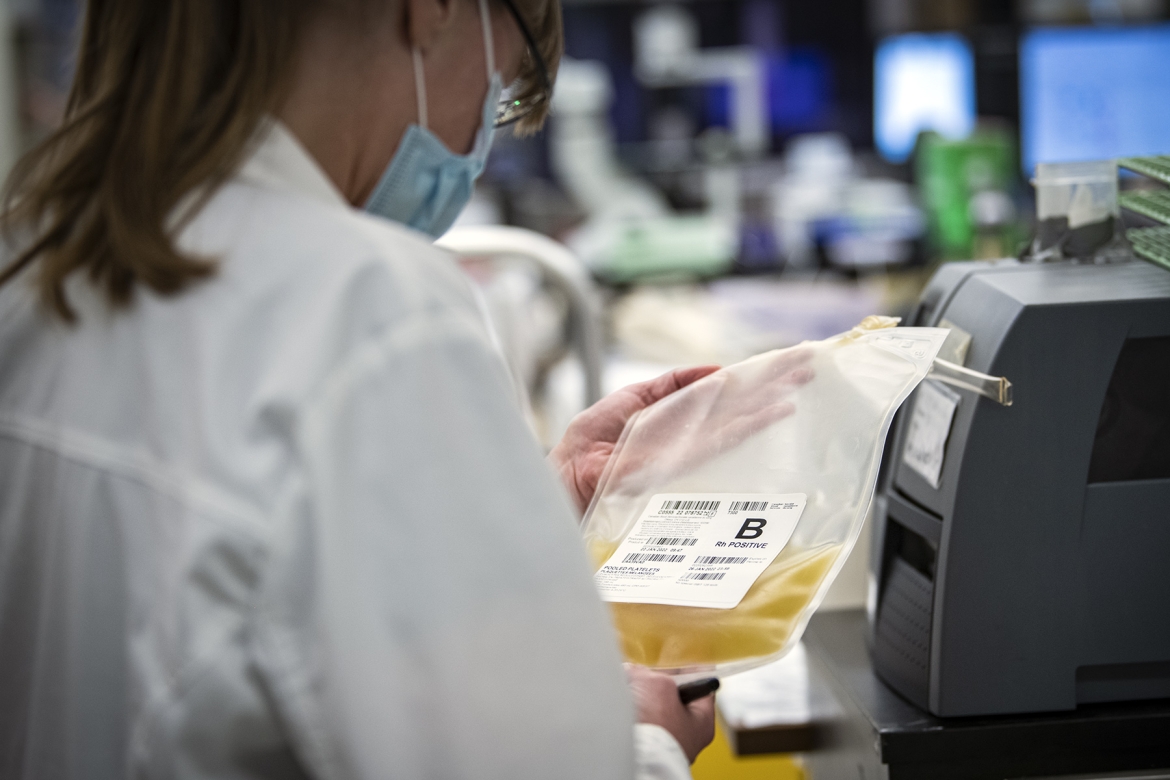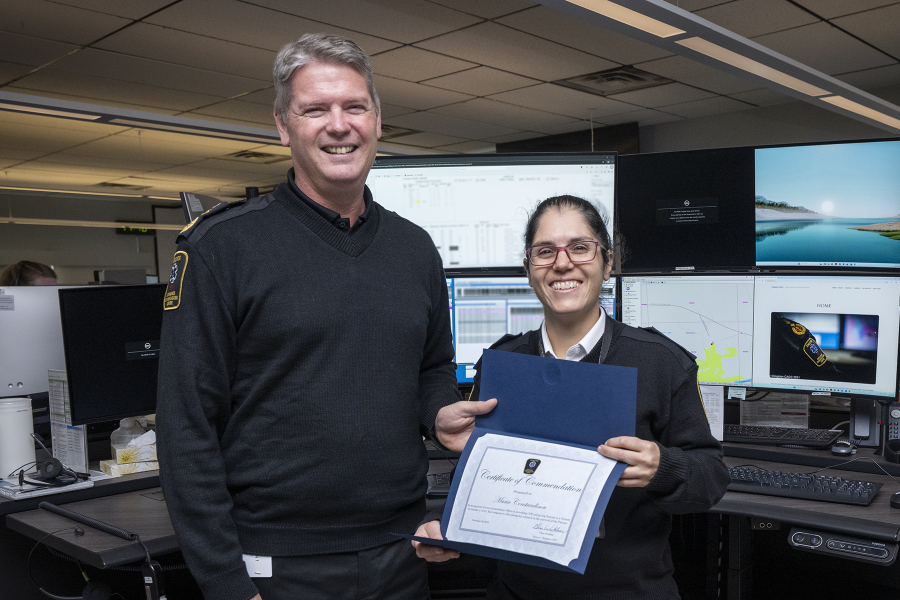Effective immediately masking is required for everyone when present on all inpatient units, in the Emergency Department (ED), the Urgent Care Centre (UCC), and the Children’s Outpatient Centre (COPC).

Patients at Kingston Health Sciences Centre (KHSC) who require platelet therapy are now benefiting from technology that’s adding an extra layer of safety to Canada’s blood supply.
Earlier this month, Canadian Blood Services launched its first pathogen-reduced platelet product. Pathogen-reduced platelets are now on the shelves of hospitals served by the Ottawa production site, which includes KHSC.
“After blood is donated it is separated into three individual products, red blood cells, plasma and platelets. Platelets are most often used for patients who are undergoing chemotherapy and for patients who have had cardiac surgery to help stop excessive bleeding,” says Dr. Jeannie Callum, Medical Director of Transfusion Medicine.
While blood donors are rigorously screened and all blood products are thoroughly tested for an array of diseases, some diseases can’t be identified by testing, especially as new diseases and pathogens arise amongst the general population.
The new technology targets and damages the genetic material in pathogens, such as viruses, bacteria and parasites using ultraviolet (UV) light. This stops the pathogen from being able to cause illness in the recipient because it cannot replicate.
“While very uncommon, 1 in 10,000 people may become septic after a platelet transfusion because the platelet product contains bacterial pathogens. This is in part because platelets are particularly fragile and cannot be refrigerated or frozen like other blood products,” says Dr. Callum. “So by adding this extra layer of safety and destroying any pathogen that makes its way through the testing process, we can be sure now that patients at KHSC are receiving the safest product that the world has to offer.”
While this technology is new to Canada, it has been used routinely in Europe for well over a decade, and is increasingly being used in the U.S as well.
“This really is a best practice and we are very excited to be one of the first hospitals in Canada to offer this new platelet product. We are very excited to see this product eventually rolled out across the country,” says Dr. Callum. “One day we hope to see this technology used to treat all blood products, including red blood cells and plasma.”
At KHSC, while the numbers fluctuate depending on patient needs, an average of 100 units of platelets are used per-month. While even safer than before, the new platelet product has another added benefit.
“The new process actually also removes a lot of fluid off the product, so it ends up being a smaller volume given to patients,” says Dr. Callum. “The fluid is replaced with an electrolyte mixture so that patients might not experience as many reactions after the transfusion. Overall, this really is an exciting development for our patients and we are delighted to see Canadian Blood Services innovating to improve the safety of transfusions.”
To learn more about pathogen-reduced platelets, visit: https://www.blood.ca/en/stories/introducing-pathogen-reduced-platelets-…





